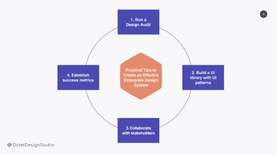Oct 27, 2022
A comprehensive guide to creating enterprise design systems
Tutorials• Aakash Jethwani• 8 Mins reading time
Reading Time: 6 minutesEnterprise Design Systems are one of the most crucial aspects to consider while you are designing an enterprise product. By doing so, teams can speak the same visual language, collaborate on designs, and develop a consistent brand identity and personality even if they are dispersed across multiple nations and regions.
It streamlines the entire process of product design and bridges the gap between design and development. It is also responsible for driving change in innovation and transformation and holds the key to ensuring a consistent user experience.
Is it that simple? No. A lot of work goes into implementing a design system. Teams can work more effectively to create excellent design systems and present unique solutions with the help of an enterprise design system.
In this blog, we shall examine what an enterprise design system is.
Meaning of enterprise design system
An enterprise design system is a collection of best practices, repeatable design components, procedures, usage rules, and patterns. The method aids organizations in creating a reliable, effective design and development process.
A design system helps design and transformation teams to be more effective as organizations grow.
This system produces a cohesive solution by rethinking products, services, and processes. Essentially, they serve as a platform to assemble all the resources enterprises can use to create a product.
It is a collection of all the components that go into making an enterprise product. This can be viewed as a graphic representation of a set of regulations or fundamental principles guiding the creation of an enterprise product.
An enterprise design system’s main purpose is to strengthen the brand, enhance the design process, and smoothen the user experience.
Advantages of enterprise design system
An enterprise design system can benefit any product team, whether they are a startup, a small business, or an enterprise corporation. Let’s look at a few of the advantages of the enterprise design system:
1. Consistency and cohesive product design
Poor enterprise products negatively affect organizations as they upset employees, increase their workload, and lower productivity and performance. When designers have templates, reusable parts, and patterns at their disposal, they can concentrate on addressing important client concerns rather than inventing yet another button variant.
At the same time, developers have a central codebase where all the parts and pieces are stored. Building more consistent products more quickly is possible through code reuse. Positive side effects include cleaner code and fewer problems, and usability increases.
2. Faster design and development
Efficiency is king in the fast-paced world of business. An enterprise design system can therefore help your business save valuable time.
Reusable pattern libraries, methods, and guiding principles are the building blocks of design systems, which streamline and accelerate design and development workflows within an organization. Instead of beginning from scratch, teams can construct better solutions more quickly by reusing lego components.
3. More creativity
The more time and money for innovation, the more effective the design and development procedures are. Creating a system landscape with an enterprise design system enables you to automate a significant portion of the process, including component hierarchy, colour schemes, and themes.
This not only maintains uniformity and saves time, but it also frees up key resources that can be used to develop the next great concept in innovation.
4. Minimized design and development costs
In comparison to detecting and addressing a software issue during the requirements and design phase, the post-launch phase is 100 times more expensive and 30 times slower. Designers and developers spend less time creating designs and coding for repetitive elements with a design system.
This reduces the cost of design and development, thus allowing the business to allocate more funds toward user research to identify important user issues and develop creative solutions to them.
5. Easier iteration, testing, and feedback
The process of putting new features into production is time- and money-consuming. It is more cost-effective to test the original concepts with the stakeholders and users of the product while the concept is in the discovery and design phase.
Design systems enable more rapid high-fidelity iterations and user testing while maintaining a real product’s appearance, feel, and performance. A shorter cycle time enables better experiences to be included in the product more quickly, increasing feedback and enabling additional iterations.
6. Pattern archive
Paying adequate attention to design patterns to produce successful products and services is crucial. A specific user interface element, like a button or hover symbol, can significantly impact the user experience as a whole.
As a result, product teams ensure careful thought goes into creating these elements. Designing such components from scratch might be a pain for any new project.
An enterprise design system addresses these issues by developing a pattern library containing examples of fundamental design components and advice on what to do and avoid when generating new ones.
7. A common language between developers and designers
Investing in a design system entails funding collaboration between designers and developers. A well-designed design system establishes a consistent language for both teams and facilitates a seamless handoff. Designers manually hand off key portions of the user interface (UI) while the design system handles the rest.
Utilizing design tokens and variables will increase process efficiency and assist in maintaining a high standard of communication.
Practical tips to create an efficient enterprise design system
Implementing business design systems is advantageous. Here are some guidelines for putting together a successful enterprise design system.
1. Run a design audit
Before putting an enterprise design system into place, conducting an audit lays a solid basis for future success and offers insightful information about the difficulties and complexities involved.
Designers can find opportunities for improvement by performing a design system audit on the current UI elements, pattern libraries, and design policies. It is the first step in revamping an existing design system.
2. Build a UI library with UI patterns
Providing a consistent user interface (UI) throughout your application can be challenging. A UI system makes your product’s navigation intuitive for consumers and ensures consistency throughout, helping them become accustomed to your design aesthetic.
They assist teams by supplying them with a better organized and supervised method of creating UI for their products. Defining styles, colours, spacing, font sizes, etc., is the ideal place to start. Any UI library’s design system serves as its skeleton and is the only source of truth for all stylistic rules.
3. Collaborate with stakeholders
Your work will be easier if you know who your stakeholders are and what they desire. By doing this, you can demonstrate to stakeholders how the project benefits their team, company, and work. You should draft a plan with a specific recommendation and present it to the decision-makers.
Collaborating with stakeholders who share your interests makes it possible to create outcomes, improve current systems, and work together to create a better-functioning organization. This gives you a common goal and lets you want the best results for your organization.
4. Establish success metrics
Business executives must master the art of establishing and assessing success indicators to assess the performance of their teams. Success metrics provide a quantitative tool for your team to assess your advancement.
You can determine whether your strategy is working or not by creating metric-based goals. Two different performance criteria are established by top design teams for their design systems:
Metrics for adoption: This matrix reveals whether the group is aware of using an appealing design approach.
Outcome matrix: This matrix provides information on whether the employees are successful in achieving the objectives they set forth in developing the design system.
It’s not always simple being a designer. You work on projects for clients, and occasionally, you work on projects purely for the sake of innovation. The hardest part of all can be getting those projects out there.
Even if you develop the best design system, it will be useless if no one in your organization actively supports it. The best thing you could do is encourage individuals to participate in events like webinars and seminars.
All of these initiatives seek to inform people about the system’s accessibility to the organization and how to use it. At first, launching a new design project may seem like an overwhelming endeavour, but with a plan and the right tools, it’s really not that tough to promote.
Conclusion
Design systems contribute to the commercial success of major corporations like Google, IBM, Microsoft, Apple, Airbnb, and Uber. A good enterprise design system is a unified language that makes it easier for designers and developers to work together, simplifies their job, and solves problems consistently.
It helps product teams maintain visual and functional consistency across all of their digital products by giving them access to the same visual design concepts, style guides, and components.
You can get in touch with a leading enterprise UX design agency like Octet Design Studio to create your own enterprise products by building scalable design systems. We have extensive expertise in creating design systems for businesses of all sizes. To find out more about us and our services, visit our website.
Subscribe to
blogs
Related Blogs
Benefits of UI UX design: How it transforms user experience
Reading Time: 9 minutes In the dynamic world of digital interactions, UI/UX design stands as the backbone of creating meaningful and seamless experiences for users. Whether you’re a seasoned designer or just stepping into the realm of UI/UX, understanding the advantages of UI/UX Design and benefits of user experience design can significantly impact your approach to crafting interfaces that […]
Dec 28, 2023 • By Aakash Jethwani

Essential UI UX design tips for outstanding UX experiences
Reading Time: 9 minutes In the rapidly changing digital landscape, UI/UX Design holds unparalleled importance. Its significance lies in crafting experiences that resonate with users, ensuring their satisfaction and loyalty. A meticulously designed UI/UX becomes a secret weapon in the competitive tech space, setting a product apart from the crowd. Beyond aesthetics, it plays a pivotal role in increasing […]
Dec 27, 2023 • By Aakash Jethwani





